


xxxxxThe Venetian baroque composer Antonio Vivaldi (the “Red Priest”) is best known today for The Four Seasons, first performed in 1725. In his lifetime, however, apart from much religious music, he wrote 500 concertos, 23 symphonies, 75 sonatas and 40 operas. He was also an accomplished violinist, and conducted many of his own works. In particular, he made important improvements to the concerto. He introduced the three-
ANTONIO LUCIO VIVALDI 1678 -
(C2, J2, W3, AN, G1, G2)
Including:
Jean Philippe Rameau

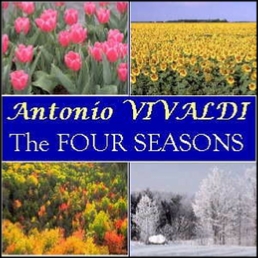 xxxxxThe Italian Baroque composer Antonio Vivaldi is best known today for his descriptive piece The Four Seasons, first performed in 1725 for violin and orchestra. However, during his working life he wrote no less than 500 concertos, 23 symphonies, 75 sonatas and over 40 operas, as well as much religious music. He was, himself, an accomplished violinist, and he conducted many of his own works.
xxxxxThe Italian Baroque composer Antonio Vivaldi is best known today for his descriptive piece The Four Seasons, first performed in 1725 for violin and orchestra. However, during his working life he wrote no less than 500 concertos, 23 symphonies, 75 sonatas and over 40 operas, as well as much religious music. He was, himself, an accomplished violinist, and he conducted many of his own works.
xxxxxVivaldi was born in Venice and received musical instruction from his father, a violinist at St. Mark's Cathedral. He was ordained into the church in 1703, and it was at this time that, because of his red hair, he acquired the name ll Prete Rosso, the Red Priest. The following year he began teaching the violin at the Ospedale della Pietà, a conservatory for orphaned girls. He was director of music there for 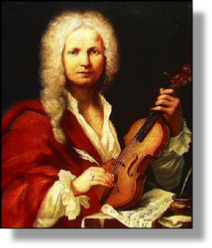 a number of years, and he stayed on the staff for the rest of his life, teaching his students, and composing oratorios and concertos for weekly concerts. He began to gain an international reputation from around 1713, when he started to compose operas, travelling to cities in Italy and elsewhere to direct their performances. By the 1720s he was sending out instrumental music to customers throughout Europe. But the popularity of his work did not survive his years. His music came to be regarded as old fashioned, and his career gradually went into decline. In 1740 he travelled to Vienna to attend the production of one of his many operas, but fell ill and died before the performance. Judging by the simplicity of his funeral it would seem that he fell on hard times towards the end of his life.
a number of years, and he stayed on the staff for the rest of his life, teaching his students, and composing oratorios and concertos for weekly concerts. He began to gain an international reputation from around 1713, when he started to compose operas, travelling to cities in Italy and elsewhere to direct their performances. By the 1720s he was sending out instrumental music to customers throughout Europe. But the popularity of his work did not survive his years. His music came to be regarded as old fashioned, and his career gradually went into decline. In 1740 he travelled to Vienna to attend the production of one of his many operas, but fell ill and died before the performance. Judging by the simplicity of his funeral it would seem that he fell on hard times towards the end of his life.
xxxxxIncluded in his sacred music are his lofty and joyous Gloria in D major of 1708, his oratorio Juditha Triumphans, composed in 1716, and a number of masses and motets. He achieved much success with such works, especially with his vocal music, but it was in the development of the concerto that Vivaldi made his greatest contribution, providing a model for musicians throughout Europe. He is generally attributed with introducing the three-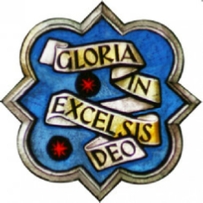 s (technical high spots) for individual soloists. A large number of his concertos are solo, mostly for the violin, but some cater for a variety of instruments, including the cello, viola d'amore, mandolin, oboe, flute, bassoon and brasses. The remainder are either concerti grossi (for two or more instruments), concerti ripieni for orchestra only, or chamber concerti for a group of instruments without an orchestra. In his works of three movements, the first and last are usually spirited and vigorous, whilst the middle piece is slow and lyrical in theme.
s (technical high spots) for individual soloists. A large number of his concertos are solo, mostly for the violin, but some cater for a variety of instruments, including the cello, viola d'amore, mandolin, oboe, flute, bassoon and brasses. The remainder are either concerti grossi (for two or more instruments), concerti ripieni for orchestra only, or chamber concerti for a group of instruments without an orchestra. In his works of three movements, the first and last are usually spirited and vigorous, whilst the middle piece is slow and lyrical in theme.
xxxxxAlthough he was a major figure in Baroque music, and one of the most influential musicians of his day, his work was generally neglected after his death, if not in the latter years of his life. However, the German composer Johann Sebastian Bach studied Vivaldi's work in his formative years and arranged ten of his concertos for the keyboard, and this served to keep alive some interest in his compositions. Then in the 1920s a very large collection of his musical manuscripts came to light -
xxxxxIncidentally, although he was a priest, Vivaldi was not particularly pious. However, he frequently headed his compositions with the letters “LD” or “LDBMDA”. These were Latin abbreviations meaning Praise be to God and Praise be to God and the blessed Virgin Mary, Amen!
xxxxxAn important composer and musical theorist at this time was the Frenchman Jean Philippe Rameau (1683-
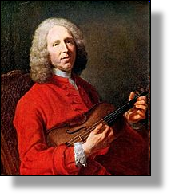
xxxxxAn important composer and influential musical theorist at this time was the Frenchman Jean Philippe Rameau (1683-
xxxxxAs a composer he was particularly successful in his keyboard music and stage work, but he is particularly remembered today for his contribution as a music theorist. He wrote 12 treatises and many articles on this subject subsequent to writing his famous Treatise on Harmony, produced in 1722 whilst working in Clermont. This celebrated work systematically traced the harmonic practices of the past 100 years, and introduced a system of chord classification which proved the basis for future methods of harmony. And central to this 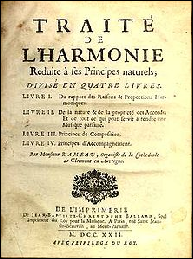 comprehensive theory was the overriding need for harmony to have priority over melody. In music, as in all art, he maintained, strict rules were necessary to impose order where chaos would otherwise reign.
comprehensive theory was the overriding need for harmony to have priority over melody. In music, as in all art, he maintained, strict rules were necessary to impose order where chaos would otherwise reign.
xxxxxNot surprisingly, his impressive Treaty on Harmony brought Rameau back to Paris. Here he led an active life, composing for the harpsichord and becoming a fashionable teacher in music theory and keyboard technique. Inx1727, however, his fortunes improved even further when he gained the support of a wealthy financier named Le Riche de La Pouplinière (1693-
xxxxxAmong his major compositions were his opera-
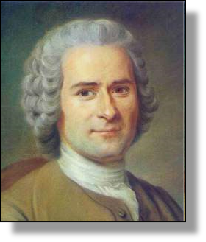 xxxxxIn the last years of his life his views on musical style involved him in a bitter controversy with his fellow countryman, the philosopher Jean Jacques Rousseau (illustrated), and, to a lesser extent, with certain compilers of the French Encyclopédie. Musically speaking, the young Rousseau had no professional training, and was very much a newcomer to music, but the disagreement was centred more around the role of music in society rather than musical form itself. Rousseau favoured Italian music because of its freedom of expression. Turning Rameau’s ideas upside down, he argued that melody had to have priority over harmony because harmony, with its strict adherence to a set of rules and traditions, stifled creativity. In many respects, it must be said, his argument won the day, borne out later by the works of the German Christoph Willibald Gluck and the Austrian Wolfgang Amadeus Mozart, composers who gave European music a new direction.
xxxxxIn the last years of his life his views on musical style involved him in a bitter controversy with his fellow countryman, the philosopher Jean Jacques Rousseau (illustrated), and, to a lesser extent, with certain compilers of the French Encyclopédie. Musically speaking, the young Rousseau had no professional training, and was very much a newcomer to music, but the disagreement was centred more around the role of music in society rather than musical form itself. Rousseau favoured Italian music because of its freedom of expression. Turning Rameau’s ideas upside down, he argued that melody had to have priority over harmony because harmony, with its strict adherence to a set of rules and traditions, stifled creativity. In many respects, it must be said, his argument won the day, borne out later by the works of the German Christoph Willibald Gluck and the Austrian Wolfgang Amadeus Mozart, composers who gave European music a new direction.
xxxxxFrom about the mid-
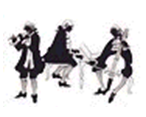 xxxxxIncidentally, when Rameau was in Clermont in 1715 he signed a contract agreeing to be the cathedral organist for the next 29 years. In 1722 this proved something of an embarrassment when his Treatise on Harmony brought unexpected fame and a strong desire on his part to seek greater fortune in Paris. The authorities in Clermont were not prepared to release him, so he took matters into his own hands. A prickly individual, by all accounts, and one not to be thwarted, at an evening service in the cathedral he pulled out all the stops -
xxxxxIncidentally, when Rameau was in Clermont in 1715 he signed a contract agreeing to be the cathedral organist for the next 29 years. In 1722 this proved something of an embarrassment when his Treatise on Harmony brought unexpected fame and a strong desire on his part to seek greater fortune in Paris. The authorities in Clermont were not prepared to release him, so he took matters into his own hands. A prickly individual, by all accounts, and one not to be thwarted, at an evening service in the cathedral he pulled out all the stops -
G1-
Acknowledgements
Vivaldi: by the Dutch-


